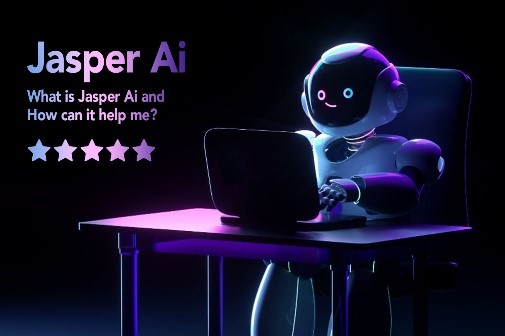
AI-generated content has some benefits in terms of efficiency, cost-effectiveness, consistency, and accuracy, but also has significant limitations when it comes to creativity, context, quality, and plagiarism.
By Bukhari Zulfiqar Shah
Ph.D. Scholar, Xian, China
Artificial Intelligence Generated Content (AIGC) is machine-made text – such as blogs, articles, descriptions, and other marketing collateral – based on human search queries. AI-generated content refers to any content that is created or generated by an artificial intelligence system, without direct human input or intervention. This can include everything from news articles and product descriptions to art and music. In the tech industry, AI is expanding quickly and helping with a variety of tasks, including producing content and images. It can’t, however, accomplish everything.
 AI-Generated content creation is having its moment in the spotlight and while AI-generated tools aren’t completely new, the growing popularity of ChatGPT by OpenAI and Jasper AI have opened up an entirely new conversation. Some have welcomed these tools with open arms, while others question whether it’ll replace their jobs. As AI-generated content has some benefits in terms of efficiency, cost-effectiveness, consistency, and accuracy, it also has significant limitations when it comes to creativity, context, quality, and plagiarism. Companies should weigh the pros and cons of AI-generated content carefully before deciding whether to use it.
AI-Generated content creation is having its moment in the spotlight and while AI-generated tools aren’t completely new, the growing popularity of ChatGPT by OpenAI and Jasper AI have opened up an entirely new conversation. Some have welcomed these tools with open arms, while others question whether it’ll replace their jobs. As AI-generated content has some benefits in terms of efficiency, cost-effectiveness, consistency, and accuracy, it also has significant limitations when it comes to creativity, context, quality, and plagiarism. Companies should weigh the pros and cons of AI-generated content carefully before deciding whether to use it.
Pros of AI-generated content
- Increased speed and efficiency: AI-generated content can be created quickly and efficiently. It can save time for companies that need to produce large volumes of content.
- Cost-effective: AI-generated content can be less expensive than content produced by human writers, particularly for repetitive tasks.
- Consistency: AI-generated content is consistent in tone and style, which can be useful for maintaining brand consistency.
- Improved accuracy: AI algorithms can help to reduce errors and improve accuracy in content creation.
Cons of AI-generated content:
- Lack of creativity: AI algorithms can only create content based on pre-existing templates and data. As a result, AI-generated content may lack the creative flair of human-written content.
- Limited understanding of context: AI algorithms may struggle to understand the nuances of language and the context of the content they are creating.
- Quality concerns: AI-generated content can be of variable quality, particularly if the algorithm used is not well-designed or not properly trained.
- Risk of plagiarism: AI-generated content may unintentionally plagiarize existing content, particularly if the algorithm is not programmed to recognize copyrighted material.
Innovations in artificial intelligence (AI) may be viewed as disruptive interventions to academic integrity since they may make it simpler for people to get knowledge and solutions to issues without conducting original research or exercising critical thought. The ideals of academic integrity may be compromised if this results in a scenario where students and other people are more prone to steal data or pass off someone else’s work as their own. While AI models may provide a number of advantages, they also run the risk of impairing pupils’ critical thinking and creativity to an unfavorable degree.
Using AI-generated content in academic work can be beneficial, but it’s important to use it ethically and responsibly
The people might not see the point in devoting time and money to traditional schooling, which will make them even less inclined to choose a career in academia or scientific research. This will result in a lack of uniqueness, which eventually will destabilize the balance of society. In this aspect, the developing world will be particularly badly struck.
Using AI-generated content in academic work can be beneficial, but it’s important to use it ethically and responsibly, properly attribute sources, critically evaluate the information, and understand the limitations of AI-generated content. It’s essential to properly cite and attribute the sources you’re using. While AI-generated content can be helpful for generating ideas or providing background information, it’s still important to critically evaluate the information and ensure that it’s accurate and reliable.
Numerous universities all around the world have taken measures to restrict the usage of AI-generated content in a way that may compromise the academic research process. All of these steps are taken to make sure that academic work is original and accurately reflects the knowledge and abilities of a certain student. Universities strive to advance academic integrity and uphold the caliber of their programs by implementing these actions.
In many developed countries, there are laws and regulations in place to govern the use of AI-generated content. These laws are designed to ensure that AI-generated content is created ethically and responsibly, and that it doesn’t violate any existing laws or regulations.
For example, in the United States, the Federal Trade Commission (FTC) has issued guidelines for the use of AI in advertising and marketing. These guidelines require companies to be transparent about the use of AI in their advertising, and to ensure that AI-generated content is not deceptive or misleading.
While AI can be a powerful tool for generating text, it’s not capable of the same level of analysis and critical thinking as humans
In the European Union, the General Data Protection Regulation (GDPR) includes provisions that govern the use of AI-generated content. The GDPR requires companies to obtain explicit consent from users before collecting or processing their personal data, and to ensure that any AI-generated content is fair, transparent, and non-discriminatory. Other developed countries, such as Japan and Canada, have also implemented laws and regulations to govern the use of AI-generated content. These laws typically focus on issues such as data privacy, transparency, and accountability.
While there are no laws and regulations in Pakistan that specifically regulate the procurement or use of AI-based solutions or technologies. The procurement laws already in place in Pakistan apply to such solutions. It is important to note that keeping in mind the significant development in the technology sector and all new start-ups focused on technology, the Ministry of Science and Technology has been reported to be actively working on AI-based regulations including AR/VR policies.
Overall, it’s important to understand the limitations of AI-generated content. While AI can be a powerful tool for generating text, it’s not capable of the same level of analysis and critical thinking as humans. Therefore, it’s important to use AI-generated content as a starting point for research and writing, rather than relying on it completely. The laws and regulations governing AI-generated content are still evolving all around the world, as AI technology continues to advance and become more sophisticated. However, it’s clear that many developed countries are taking steps to ensure that AI-generated content is created and used in an ethical and responsible manner.
_________________
About the Author
 Bukhari Zulfiqar Shah, hailing from Khairpur Mirs, and an advocate of Sindh High Court, is currently doing Ph.D. in International Environmental Law from Xian Jiaotong University, China. He did graduation, LLB, MA Journalism, and MA Sociology from Shah Abdul Latif University Khairpur, and did LLM from Zhejiang University, China. He served more than 15 years in development sector at different levels along with banking and government sectors in Pakistan.
Bukhari Zulfiqar Shah, hailing from Khairpur Mirs, and an advocate of Sindh High Court, is currently doing Ph.D. in International Environmental Law from Xian Jiaotong University, China. He did graduation, LLB, MA Journalism, and MA Sociology from Shah Abdul Latif University Khairpur, and did LLM from Zhejiang University, China. He served more than 15 years in development sector at different levels along with banking and government sectors in Pakistan.